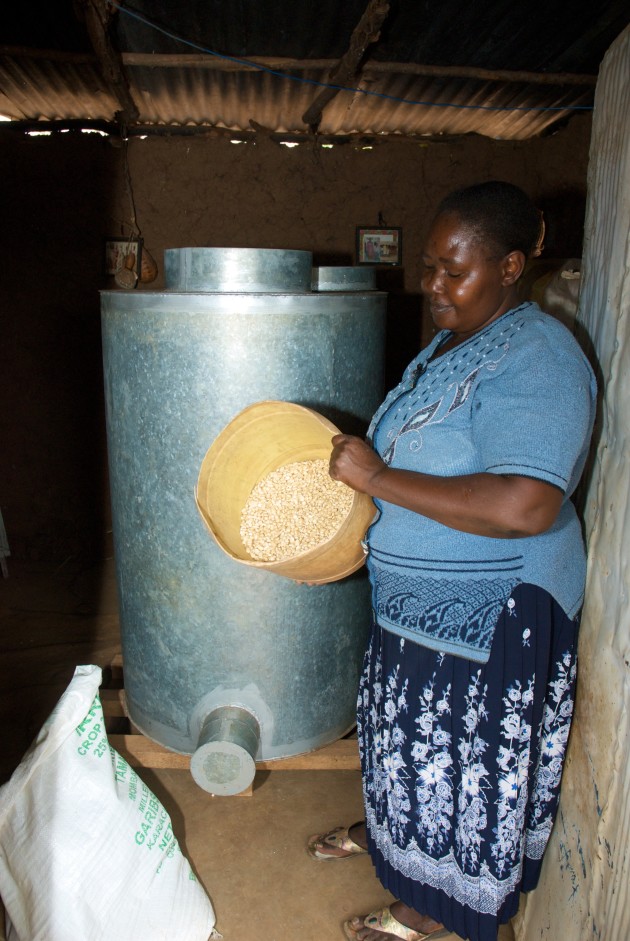The Lilith Blog 1 of 2
March 19, 2018 by Betsy Teutsch
Passover, Food Insecurity, and a Silo of Justice
Soon it will be Passover, time to rid our cupboards of accumulated foodstuffs and eradicate anything with leavening.
This past year, I have been immersed in writing a follow-up to my original book on poverty-reducing technology. The new volume focuses exclusively on tools for reducing postharvest food losses. In the developing world, 800 million people are food insecure, but about 40% of food grown and harvested goes to waste en route to the table. A myriad of infrastructural deficits contribute, a major culprit being inadequate storage facilities.
Just when we are at the end of winter, moving into spring, we gear up and get rid of our excess leavened food. But for way too many families on the planet, this in-between time has another name: Hunger Season. No need to clean out the pantry. There is no food there.
Just when impoverished families run out of food, the prices go up. That’s how markets work. Lower supply, higher demand: when many families run low on food, demand increases, as do prices.
A farmer might manage, through the sweat of her brow, a dozen bags of maize. That would be enough to get her family through the Hunger Season, when last year’s food supply dwindles and the new crop isn’t yet mature. She shells and dries the maize, bags it in jute or plastic, and places it in safe spot. Sadly, by the end of the season, pests and insects have feasted on the family’s food and rendered it null and void. Just like our chametz, perhaps.

Esther Nduku, a maize farmer and trader in Embu, Kenya, shows her dry, clean maize grain, which she is storing in a metal silo. The silos can be made by local artisans using readily-available materials, take up little space, and enable farmers to store their grain without losses.
Photo credit: CIMMYT.
By introducing a metal silo and hermetic storage, the story has a different plot. The silo, fabricated by local metalsmiths, can stand as tall as the farmer. She tests her maize for a low enough moisture content to safely pour it into the silo’s top, as full as possible. Hermetic sealing is airtight; removing as much oxygen as possible deprives the pests, insects, and pathogens that compete for food of the oxygen they need to survive. At the top of the full silo, a candle is placed on a plate and lit, and the top is sealed. The candle burns until no more oxygen is available.
The family takes their grain as needed, carefully turning a spigot and resealing after they’ve removed what they need.
This simple structure adds at least 10% of their food back into their family economy. That might not sound like a lot, but here is what it means: the family has eliminated Hunger Season. They are sufficiently nourished through the whole winter, and might even have a surplus. Now they are sellers and not buyers when prices are highest.
Silos and grain storage are women’s domain. They are in charge of cleaning out the damaged kernels and salvaging edible ones, a tedious job. But with hermetic sealing, the grain is pristine. Women can sell it, or use it to prepare food to sell and earn added income.
The silos are so effective that women figured out they needed to lock them and keep the keys, to prevent so the men in the household from removing grain to pay for the things for which men feel entitled to spend family money.
I described to a friend what a silo looks like: a giant tzedakah box!
Read a preliminary “Teaser” of Betsy Teutsch’s upcoming book 100 Under $100: Tools for Reducing Postharvest Losses.
The views and opinions expressed in this article are the author’s own and do not necessarily reflect those of Lilith Magazine.
 Please wait...
Please wait...